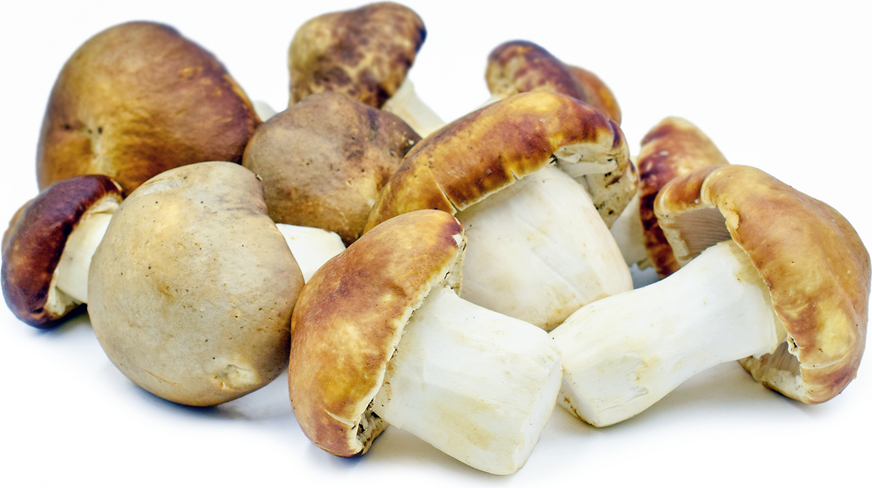


Wine Cap Mushrooms
Estimated Inventory, lb : 0
This item was last sold on : 02/16/23
Description/Taste
Wine Cap mushrooms are medium to large in size with caps averaging 6-13 centimeters in diameter and are attached to long, thick stems. When young, the burgundy, red-brown caps emerge rounded, folded over, and slightly sticky. As the mushroom matures, the smooth cap detaches from the stem, flattens out becoming dry and cracked, and transitions to a yellow-brown. Underneath the cap, the attached, crowded gills begin pale and become grey to purple, and a partial veil covers the gills when young, breaking when mature leaving a wrinkled ring or annulus around the stem. The white, broad stems can reach up to twenty centimeters in length, and the flesh is also white when sliced and firm. When cooked, Wine Cap mushrooms are crisp with a mild, earthy, and nutty flavor with hints of potatoes and red wine.
Seasons/Availability
Wine Cap mushrooms are available in the late spring through early fall.
Current Facts
Wine Cap mushrooms, botanically classified as Stropharia rugoso-annulata, are an easily identified, edible variety that is a member of the Strophariaceae family. Also known as Stroph, King Stropharia, and Garden Giants, Wine Cap mushrooms are commonly consumed when the caps are young and display their deep, red wine hues. If left to mature, these mushrooms can grow rather large and weigh up to five pounds, earning it the nickname the Godzilla mushroom. Wine Cap mushrooms can be found in the wild along stream beds and on wood chips, but they can also be cultivated in outdoor spaces and home gardens alongside other plants or vegetables. Favored by home chefs for their unusual flavor, Wine Cap mushrooms are versatile and are used in many different culinary applications.
Nutritional Value
Wine Cap mushrooms contain fiber, vitamin D, amino acids, protein, iron, copper, and some calcium.
Applications
Wine Cap mushrooms are best suited for cooked applications such as braising, grilling, and sautéing. When young, Wine Cap mushrooms can be eaten with the stem and offer a tender yet crunchy texture when lightly cooked in oil. They can also be sliced and mixed into meat sauces or risotto, roasted or braised along with other fall vegetables and served with meat, fowl or fish, added to soups, or stuffed and baked. If using the larger, more mature mushrooms, it is recommended to remove the stems as they become stringy and to slice or chop the cap to ensure even cooking. Wine Cap mushrooms pair well with lemon juice, wine, ramps, nutmeg, fennel, polenta, pasta, quinoa, and rice. They will keep up to a week when stored in a paper bag in the refrigerator.
Ethnic/Cultural Info
According to mycologists or those who study mushrooms and fungus, the Wine Cap has no poisonous look-a-likes. The name Stropharia means ring or belt, and rugoso-annulata is Latin for “wrinkled ring,” which describes the annulus around the stem that is unique to this species of mushroom. The red colored cap and lilac grey gills are also a distinguishing factor. Wine Cap mushrooms are commonly used in home gardens to enrich soil and provide an edible source of protein. They are fairly easy to grow, provide fertilizer for the soil which benefits other vegetables in the garden, and can grow on a variety of items including straw, sawdust, or wood chips.
Geography/History
Wine Cap mushrooms were first cultivated in Germany in the late 1960s and were thought to have originally come west to Europe from Russia with Napoleon. Today Wine Cap mushrooms can be found at farmers markets in the mid-Atlantic and mid-west regions of the United States, in Europe, Asia, and have recently been introduced to Australia, New Zealand, and select regions of South America.
Recipe Ideas
Recipes that include Wine Cap Mushrooms. One
Podcast




